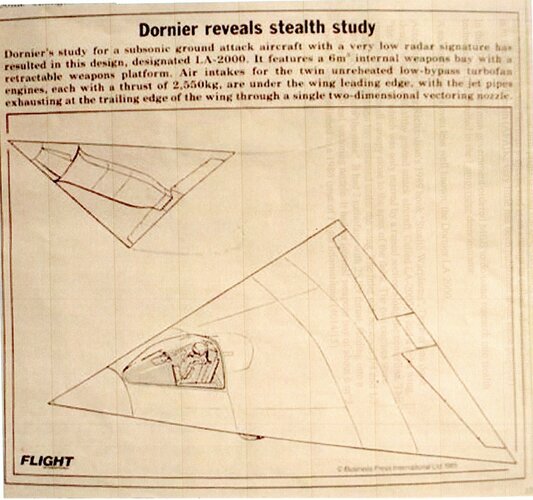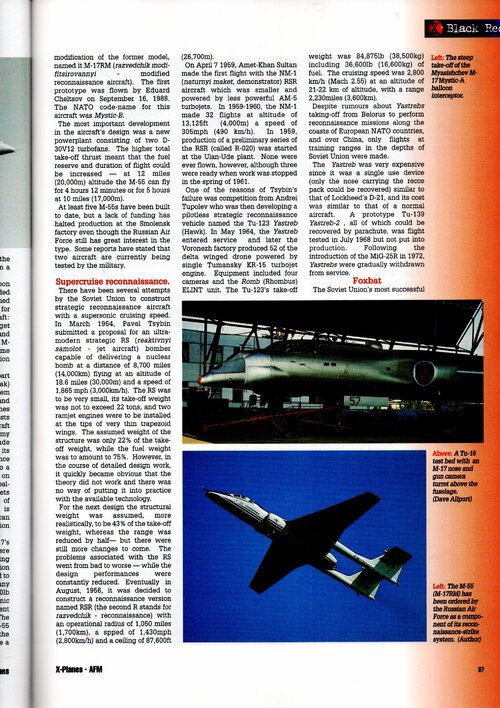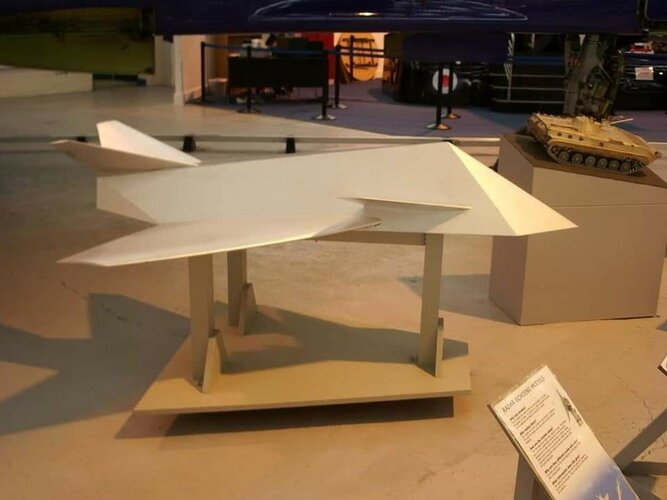Optic Stealth
The flight of Icarus and the invisible cape of Loki are recurrent concepts in the mythology of many cultures as they represent the noblest and darkest side of the human spirit. Despite its apparent incompatibility, the war dynamics search for the perfect weapon would end up joining them.
The Italian Rumpler Taube that carried bomber missions over Libya since 1911 had their wings painted with clear nitrate dope over linen and the pilots discovered that they were much more difficult to see the airplanes, from the ground, against a clear sunny sky.
In May 1912 a German Taube was experimentally coated with a transparent cellulosic material named ‘Emaillite’. During the flight tests made by Lieutenant Edouard Nitter in Wiener-Neustadt it was observed that the aircraft was practically invisible when flying at more than 300 m of altitude.
In 1913 the French presented a monoplane Moreau at the Salon de l’Aviation with transparent wings. The coating consisted of two layers of ‘Emaillite’ of 0.5 mm with a sheet of tulle between them to increase its resistance to tearing.
In 1914, engineer Ledebeff tried a new cellulosic cladding on the structure of a Farman biplane, but the material had an excessive elasticity that affected the lifting capacity of the wings.
In the summer of 1913, German engineer Anton Knubel made experiments in Münster coating a Taube with a transparent material named ‘Aeroid’ to increase the invisibility effect. The aircraft structure was painted in sky blue. In 1915, Knubel started using the ‘Cellon’ an acetyl cellulosic acid compound made by Rheinisch-Westfälischen Sprengstoff AG in Cologne. The ‘Cellon’ was transparent, little flammable and could be sewn or glued, although it might be not very much resistant to tearing as the inventor killed himself in an Albatros B.II with transparent wings on September the 8th.
On 9 July 1916, another almost invisible aircraft, marked with red crosses, was seen during a flight test, in the Somme area, by the B.E. 2C of the 16 Sqn RFC and unsuccessfully chased by French fighters. It was one of the three Fokker E.III (werknummers 616, 627, 639) that had been clad with ‘Cellon’ in June.
The invisibility tests continued during the war, using Aviatik C-1 reconnaissance airplanes and bombers Linke-Hoffman R.I and Gotha VGO in 1917. With dry weather the ‘Cellon’ was very transparent and smooth as glass, but it degraded with humidity, losing its aerodynamic properties. The material of 0.4 mm of thickness used to coat one of the Fokker ‘Eindecker’ weighted 25 kg more that the usual fabric and required much maintenance.
The Central Powers finally had to give up the magic ‘Tarnkappe’ of Siegfried in favour of a more vulgar material, that was also more resistant to heat, rain and tearing.
Since 1916, a new fabric began to be used in the Western Front, that patterned with polygons of different colours reduced the visibility of airplanes confusing them with the ground tones.
The new camouflage system was named ‘Lozenge-Tarnung’ and based its design on the Impressionists painters that, it was discovered, had a distortional optical effect during combat manoeuvres that made the enemy accurate aim very difficult.
By the end of the ninetieth century, zoologists discovered that the tiger stripes mimic the vertical shadows in the reed beds where they hide for hunting. On the other side, the zebras stripes seem designed to increase visibility; however, five out of six lion attacks fail, due to more subtle causes. As it turns out, due to the movement of the animal, the rhythmic waving caused by the black stripes produces an optical distortion (known as ‘akinetopsia’) that affects the way in which the brain calculates distances.
The Royal Navy was the first to apply this principle to the naval war but, towards 1915, almost every warship was painted with white, black, grey and blue diagonal stripes to disorient the telemeters of the enemy artillery.
In the air, the fighters Albatros D.V of the Jasta 37 were the first to use the optical distortion techniques, with its tailplane painted in black and white diagonal stripes. In combat, the violent turns of the airplane achieved the ‘zebra effect’ thus disrupting the aiming of the British pilots. They had the additional resource to use the Iron Crosses painted on the upper wing as reference, but the Lozengue camouflage and the aircraft vibration during tight turns made the distance estimation very difficult in deflection shooting. The Fokker DR.I of the Jasta 6 also used the ‘zebra effect’ painting the tailplane, the fuselage and even the interplane struts with stripes.
The system worked and towards 1917 almost every German reconnaissance two-seater airplane, operating in the Western Front, had a rectangular patch of diagonal stripes on their fuselage.
The British airplanes started to imitate them. In 1918 it was common to see the F-2B and ‘Camels’ of the RFC with series of white bands painted over the khaki of the rear fuselage.
The technique reached its peak of refinement during the summer of 1918 with the Albatros DV flown by Ltn. Fritz Rumey, assigned to the Jasta 5, an elite squadron. In this airplane, the diagonal stripes had four different widths and had been painted in spiral (like on a candy) along the fuselage.
The Austrians had their own mind about the subject. They started painting small spirals on the upper surfaces of the Phönix fighters but, around 1917 they camouflaged the Aviatik with a special scheme of hexagons which colours varied in intensity, lighter on the wing tips and tail surfaces, to blur the characteristic shape of the airplane.
The British had a problem with the colour of their airplanes. Since 1915 all were brown and both the fighters and the anti-aircraft artillery had the tendency to open fire against anything painted in another colour….. French ones included. As a consequence, their experiments were more conservative, although at the end of the war some airplanes carried the roundels of the upper plane painted in asymmetric position to confuse the enemy, as it happens with the false eye that some tropical fishes had near the tail. They also used additional, more blurred roundels, painted on unusual spots of the airplane, like the tailplane, the back of the fuselage or the central section of the upper wing.
In 1918 limited essays were made on skewed-perspective box-grids, diminishing overlapping rectangles and high visibility but misleading geometrical designs. These experiments were shaped by advice from painters of the ‘Vorticist School’ (Britain’s version of Futurism) like Wyndham Lewis and their ultimate objective was to create in the enemy pilot that second of doubt and confusion that frequently is key to escape.
The end of the WWI did not end with these practices. In 1923 the Finnish Fokker D.VII were painted on a ‘splinter’ scheme in dark blue, light grey, purple and light green. During the 30s, the new Luftwaffe started to use the ‘splinter’ in two or three different shades, although some Heinkel 45, seen during the Spanish Civil War, still kept the ‘Lozenge’ camouflage.
In 1935 the Hawker Demon fighters of the 74 sqn of the RAF, based in Malta, tried a new type of camouflage based on ochre, yellow, grey, green and brick red, with just one roundel on upper wing starboard and the opposite side aileron painted in aluminium!
The general idea, apparently not very successful, was not to make the plane hard to see but hard to be shot at by enemy pilots.
During the first years of the 30s the French chemists produced a new transparent material, similar to the cellophane, named ‘Rodoid’ or organic glass. In 1935 the Russian engineer S.G. Kozlov made new experiments, replacing the fabric coating of a Yakovlev AIR-4 trainer by ‘Rodoid’ sheets. To reinforce the optical effect, the inner structure of the airplane had been painted in aluminium colour. The flight test conducted along a standard AIR-4 proved a reduction of visibility of 75 per cent. They also revealed that the ‘Rodoid’ had electrostatic properties and accumulated the dust generated during take off, losing much of its transparency. The project of invisible airplane ‘Nyeridimyi Samolyet’ was cancelled in 1935.
The Munich crisis of September 1938 served, among other things, to prove how unprepared were the French and British air forces for the war. At that time, London was defended by biplanes that were slower than a ‘postal’ Heinkel He 111. The Hawker Fury and the Dewoitine 510 lost their aluminized painting of peace time that was hastily covered with a dark green layer.
Despite their theoretical neutrality, the North American airplanes also lost the chrome yellow on their wings. In 1940 the US Army Air Corps performed low visibility camouflage tests with some Curtiss P.36 and Northrop A-17 A. The US Navy repeated the British experiments of the ‘Vorticist School’ with some Brewster F2A and Northrop BT-1 in North Island, California. Finally mass production prevailed: Seversky and Curtiss in olive drab, Brewster and Grumman in naval grey.
In 1939 the colour of the European aviation was as dark as its future. The Germans used splinter in two shades of dark green. The British used dark green, dark earth and black and white undersides. The French used earth, ash and dark green. Over the French-German border all the airplanes looked the same. The Bf 109 shot down Belgian Hurricanes on neutrality patrols, mistaking them for British fighters. The authentic Hurricanes of the BEF shot down Potez 630 confusing them with the Bf 110 and were attacked by Morane fighters that took them for German airplanes.
Only the Poles showed some creativity. When entering the war with Germany most of their fighters were well positioned in auxiliary aerodromes, the square shaped national markings were painted on the wings in asymmetric position and some P.Z.L. P.11C fighters of the 161 squadron had schemes of optical distortion painted in zig zag over the wings, although that was not nearly enough to overcome the technical and numeric superiority of the Luftwaffe.
During the World War II, when airplanes were manufactured by tens of thousands, the dynamic of the assembly lines did not allow any experiment with complex camouflages. There was not even the time to paint the airplanes and many Mustangs, Forteresses and Thunderbolts were delivered with the naked aluminium coating, while nationality roundels were replaced by big decals to save time and hand work!
In the battlefield that covered from the jungle to the sea and from the Arctic to the desert, things were very different and the airplanes received any type of conceivable camouflage to get unnoticed against the ground they flew over. Some missions, like the stratospheric combat, photographic reconnaissance or night fighting, required specially modified airplanes with camouflage schemes adapted to the environment on which they should operate.
The Ju 86P, Bf 109 G-6/AS, Spitfire HF Mk VIII, Westland Welkin and D.H. Mosquito NF.XV, intended for high altitude combat, used to go wholly painted light grey. The Lockheed P-38 F-5 that photographed the Ruhr at medium height, were painted bluish fog-grey; the Spitfire P.R.Mk IV and Mosquito P.R. Mk XVI were painted a deep blue colour, to rest them visibility against the sky colour at high altitude, while the Spitfire P.R. Mk VII of the 541 Sqn, operating at dawn with clear weather, were painted in pink colour. For the darkness war, the RAF painted in black the under surfaces of all its bombers, to make them less visible to the reflectors.
Until 1943, all night fighters were painted in black. Germany used the Arado Ar 68E, Bf 109 E-4, Bf 110 C-6 and E-2, Do 17 Z-10, Do 215 B-5 and Do 217 J and N. The British used the Defiant Mk II, Hurricane Mk II, Beaufighter Mk II, Mosquito NF.Mk II, and even some Spitfire Mk VB of the 111 Sqn. At the beginning they used an extra matt anti reflective paint, but it turned out that it produced drag, limiting the airplanes speed.
The Americans operated in Europe and in the Pacific with Northrop P-61 and Douglas Havoc II, the Japanese used the Nakajima J1N1-S Gekko, the Italians, the Caproni Vizzola F-5 and the French the Potez 631. It seemed to be the most logical solution, but the black painting did not work out well. The airplanes were very visible from above, when flying over clouds lighted by the reflectors.
The Germans started to use this advantage in August 1943, using conventional fighters Bf 109 and Fw 190 in the ‘Wilde Sau’ night operations. In the winter of 1942, some Do 215 B-5 and Do 217 J night fighters were experimentally painted in light grey, to make them less visible to the gunners of the Lancaster and to the pilots of the Mosquito NF. II of escort. The results were good and it was ordered that all night fighters and ‘Wilde Sau’ would be fully painted with RLM 76 ‘Hellblau’ (light blue).
Recalling the experiments made with the ‘night’ Lozenge for the Gotha bombers, in the WWI, the hazy effect was improved making the shape of the airplanes blurred by means of patches or ‘worm’ schemes of RLM 75 ‘Hell Violett-Grau’ (light grey violet). I worked better with the big airplanes Ju 88 G-6, Do 217 N and Bf 110 G-4 while the fighters Bf 109 G-5 / G-6 and the Fw 190 A-6 were light grey RLM 02 ‘Grüngrau’. Some had the underside starboard wing painted in black for identification of the flak.
Since 1943, the night fighters Mosquito adopted the idea, changing the overall black by the standard daylight camouflage in dark green and ocean grey upper surfaces, keeping the under surfaces in the previous black colour, that the RAF considered useful against reflectors, provided that they flew over the layer of clouds.
The accurateness and volume of fire of the flak increased daily. From the viewpoint of the British fighters that made straffing missions over the occupied France, the number of casualties grew until 1945… the Reich vomited flak.
In 1942, Captain Paul Hexter designed a black and white dazzle camouflage scheme for the under side of the attack airplanes. It was tested in a Mustang Mk IA proving that, like the warships of the WWI, it distorted the distance calculation of German telemeters during flights at low altitude, by the so known ‘zebra effect’. Its use was never generalized due to its difficult maintenance.
Since time immemorial, magicians hid objects using the almost infallible technique of bringing the public attention towards a different point from that where the real action is happening. In May 1940, the gunners of the British Expeditionary Force that defended the French aerodrome of Vitry, got ready to shoot over two Messerschmitt that went towards them flying at 200 m of altitude. Focused on their objective, they were caught unawares by the second couple of the ‘Schwarm’ that surged from the trees flying at ground level and destroying several Hurricane of the 56 Sqn.
In the Pacific, the Betty torpedo bombers of the Japanese Imperial Navy used the same technique, operating in groups of three airplanes, out of which just one of them flew at medium altitude.
In the Mediterranean the Savoia 79 of the Regia Aeronautica were too visible over the sea, with their ‘Sicilian’ camouflage. Some machines specialised in attacks with torpedoes received a layer of light grey painting in the front of the fuselage and wings leading edges to diminish its frontal visibility.
In the Atlantic, antisubmarine aircrafts of the US Navy had the same problem: the U-Boat immersed at the lowest sign of sighting. In 1943, an experiment was performed under the Yehudi code-name to diminish the frontal visibility against the luminous background of the sky. It consisted of 10 sealed-beam lights, installed along the wings leading edges and the rim of the engine cowling of an Avenger TBM-3D bomber. The tests proved that the Yehudi system lowered the visual acquisition range from twelve to two miles.
The entry into service of the new centimetric radars, that the ‘Metox’ detectors of the Kriegsmarine could not detect, disrupted the balance in the Battle of the Atlantic, rendering the Yehudi useless. But the experiments went on using a Liberator and were only declassified in the 80s.
During the Vietnam war, the idea was resumed under the ‘Compass-Ghost’ code name and the tests made with a blue and white F-4 Phantom, lighted by nine high-intensity lamps on the wings and fuselage, reduced the detection range a 30 percent.
In the mid 90s, the advanced achieved in Computer Generated Holography, wavelength computation with Fourier transform method and Point Source Holograms, allowed the creation of holographic images in 3D around an object to hide it. But the system just worked with static objects and the Phased Array Optics required a considerable amount of electronic equipment.
In 2003, researchers at the University of Tokyo developed an active camouflage system with video cameras that registered the background to project it against the object that should be camouflaged.
In 2004, the discovery of the graphene made possible the manufacturing of curve video screens and adapts them to any surface. An aircraft with a coat of grapheme screens and equipped with video cameras that register the background from any angle and project it on the screens at the other side, may become practically invisible.
The layers of grapheme are super-thin and several of them, with different properties, may be superimposed. Under the optical screen, it is possible to locate a layer formed by hexagonal elements of grapheme that may be heated or cooled down in a selective way, thanks to the ‘Adaptiv’ system, developed by BAE systems in 2011. This layer would very efficiently act as IR camouflage.






















